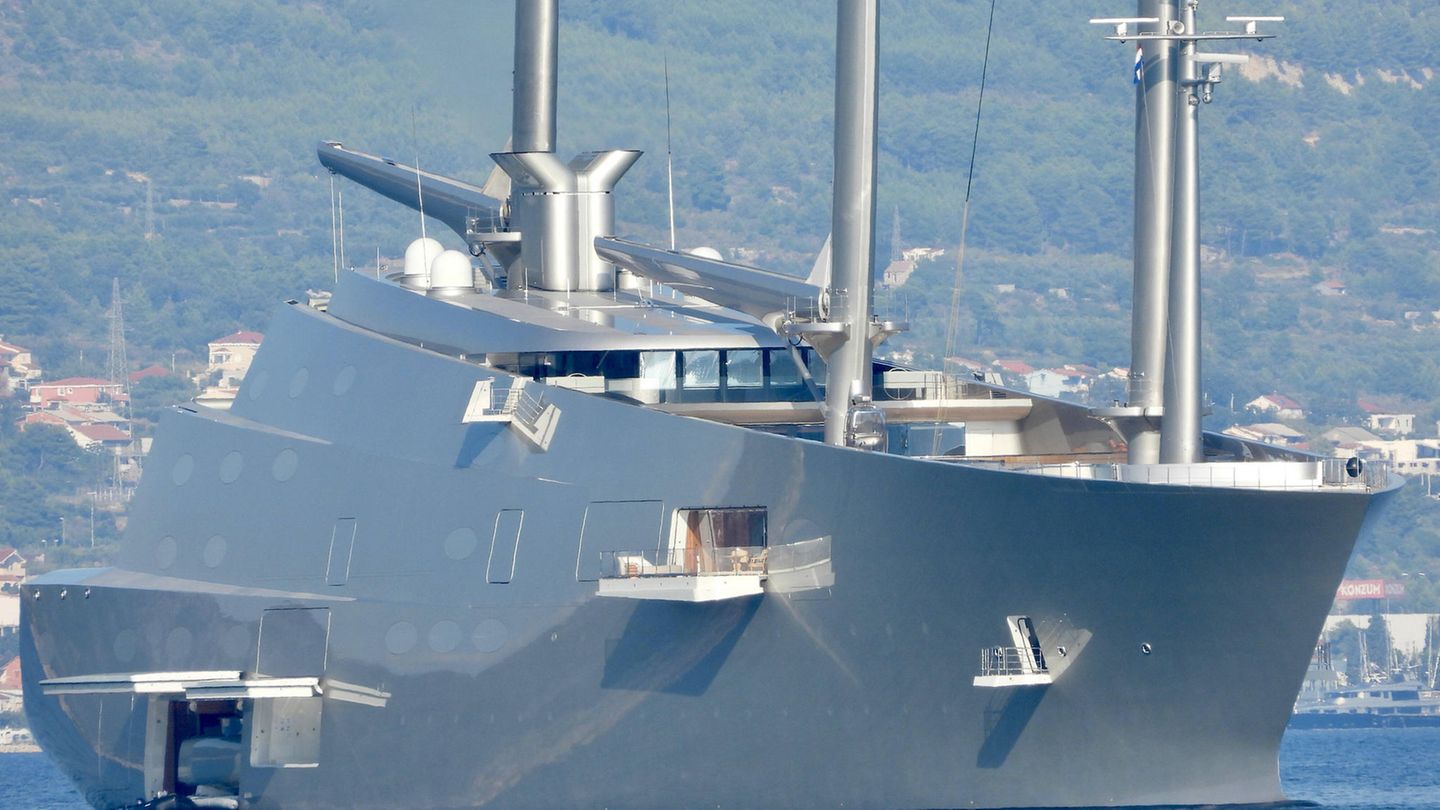Oligarch Andrei Melnichenko is one of Russia’s richest men, with an estimated fortune of more than $25 billion. His sailing yacht “A” is said to have cost over half a billion euros – and apparently more than three million euros flowed from the German treasury via a funding program.
Sailing yacht “A” is a phenomenon. The gigantic ship measures 143 meters in length and is over 100 meters high due to the three huge masts. Until the completion of Jeff Bezos’ yacht in Rotterdam, the “A” holds the title of the world’s largest sailing yacht – although technically it is a “sail-assisted motor yacht”. Its construction is said to have cost more than half a billion euros and the interior of the ship resembles a luxury hotel of the highest category. The ship has room for 20 guests and 54 crew members. A highlight should be a large underwater observation station at the lower end of the keel.
Largest order in the company’s history – bankruptcy shortly thereafter
And it all started in Germany, more precisely at German Naval Yards in Kiel, where the German Nobiskrug shipyard built the ship. For the Rendsburg company, the “A” was the largest order in over 100 years of company history. The keel of the gigantic ship was laid in 2012, and the first test drive took place at the end of September 2015. Her owner, Russian multi-billionaire Andrei Melnichenko, received the yacht after a brief dispute over outstanding payments in May 2017.
In 2021, the Nobiskrug shipyard filed for bankruptcy and was taken over by the Flensburger Schiffbau-Gesellschaft. In March 2022, the sailing yacht “A” was chained up in Trieste, Italy, due to sanctions against its Russian owner – and is still there today.
At least three million euros from the federal and state governments
A report from “” now sheds new light on the construction of the huge yacht. Because it is said that at least three million euros in tax money went into the construction of the ship through a support program from the Federal Office of Economics and Export Control.
However, it was less about giving the Russian billionaire money and more about preserving jobs and technical know-how at German locations. The Federal Office informed that star on request with: “The funding program ‘Innovative Shipbuilding Secures Competitive Jobs’ aims to improve the competitiveness of the maritime economy in Germany. In order to achieve this aim, innovation funding is only given to shipyards (!) by way of partial financing of project funding as non-repayable grants.”
The office did not communicate any specific funding or applications, but explained the purpose of the funding in more detail. It says: “The program gives German shipyards incentives to implement innovative and associated risky construction projects for merchant ships, offshore structures and process innovations. This is intended to strengthen German shipbuilding, bind knowledge and secure correspondingly competitive jobs.” In the case of the Nobiskrug shipyard, this obviously did not succeed in the long term.
8.6 million euros confirmed, probably without repayment
As “T-Online” reports, the Nobiskrug shipyard applied for funds from this funding project after receiving the order for the “SY A” – and “at least four installments” with the subject “White Pearl” in the amount of “significantly more than three million euros”. “White Pearl” was the working title under which the yacht was built in Kiel in the utmost secrecy.
Only one can be found in the databases of the EU Commission. In October 2016, the Federal Office granted the shipyard 8.6 million euros from the state treasury. It is not known how these were divided up internally.
A request from star at Nobiskrug and German Naval Yards remained unanswered. Nobiskrug did not comment at all, German Naval Yards only wrote: “Unfortunately, we cannot provide any information on this. Please contact Nobiskrug GmbH in this regard.” The aim of the inquiry was also to find out whether the funds flowed back to the federal and state governments when the yacht was sold. There is no answer, but the definition of the funding as “non-repayable grants” allows you to draw your own conclusions.
Source: Stern
Jane Stock is a technology author, who has written for 24 Hours World. She writes about the latest in technology news and trends, and is always on the lookout for new and innovative ways to improve his audience’s experience.




